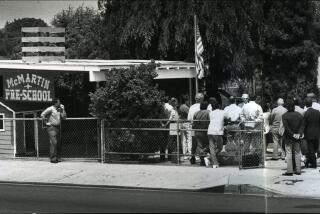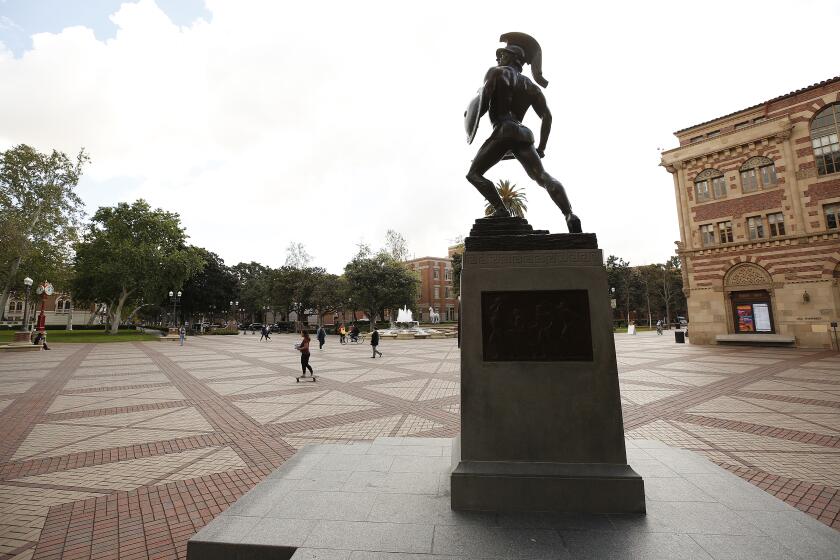What was the real crime in the ‘Kids for Cash’ scandal?
The documentary “Kids for Cash” breezed in and out of Los Angeles so quickly last month that there was little buzz (far too little) about just what the real crime was that the film depicted. That’s a shame, because it’s such an important story. Fortunately, the film now is set to be screened in the U.S. Capitol Visitor Center in a program hosted by Rep. Tony Cardenas (D-Los Angeles) and Sen. Robert Casey (D-Pa.), and later this month and next at spots around Southern California.
The basic story that forms the backdrop of the film and unfolded in and around Wilkes-Barre, Pa., in 2000 and over the following decade has all the elements of a good scandal: innocent (or mostly innocent) children, corrupt judges, unjust imprisonment and then, in a turnabout, the conviction and imprisonment of the judges.
President Judge Mark Ciavarella and Senior Judge Michael Conahan of Luzerne County Court of Common Pleas were convicted of racketeering in 2008 for accepting kickbacks: taking money from the builder of for-profit juvenile jails, then stocking those jails with kids who appeared in their courtrooms on charges that stemmed mostly from acting out in school. One girl went to juvenile jail for setting up a Myspace page that made fun of a teacher. Other infractions were similarly minor. The kids and their families were discouraged from getting lawyers for their hearings.
Imagine if judges were compensated by whoever profited from the punishment. In a most elemental sense, it stands to reason that if the private operator of an electric chair paid judges every time he flipped the switch, for example, more judges would sentence more people to death. That was the public takeaway, at the time, from the Kids for Cash scandal: Judges had a financial interest in sentencing kids to juvenile jail, so they sent them there not necessarily because justice or rehabilitation demanded it but to line their pockets.
One of the things that makes the film so good -- so essential -- is that it questions that basic notion. The filmmakers challenge their audience to understand that although the judges did commit crimes, did run afoul of judicial ethics in their financial setup, did create an incentive for them to send kids to jail, Ciavarella was already sending juvenile to lockup for sketchy reasons even before the builder of the new facility offered him money.
He ran for his judgeship, and voters elected him, on a tough-on-crime and tough-on-youth platform. After the 1999 Columbine High School killings, the public embraced the notion that by locking up kids earlier for discipline problems, it would send a message that would somehow prevent youth crime.
That’s ironic, to say the least, given the obvious mental or emotional problems of the two boys who perpetrated the Columbine killings and then killed themselves, and the clear mental damage caused to the children depicted in the film who were held, almost inexplicably, for long periods in juvenile jails.
If the film has any weakness, it’s tied in with its achievement. It is sufficiently subtle in its message as to allow viewers, if they are not paying close attention, to walk away outraged at evil judges who profited from jailing kids but still miss the fact that even without kickbacks, kids continue to be jailed and damaged unnecessarily. Kids for Cash, the name with which the scandal was tagged and that the film adopts and deftly questions, allows the public to mentally separate the crime of racketeering from the far more damaging policy of wrecking the lives of children with “scared straight”-type punishments far out of line with their actions.
See the film’s website for Southern California screening dates.
ALSO:
Will the O.J. defense work for Oscar Pistorios?
Why my family is opting out of the common core testing
Fixing child protection means fixing L.A. County government
More to Read
A cure for the common opinion
Get thought-provoking perspectives with our weekly newsletter.
You may occasionally receive promotional content from the Los Angeles Times.











